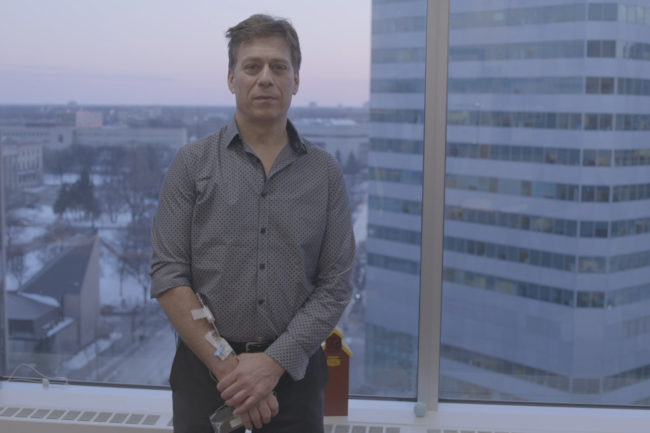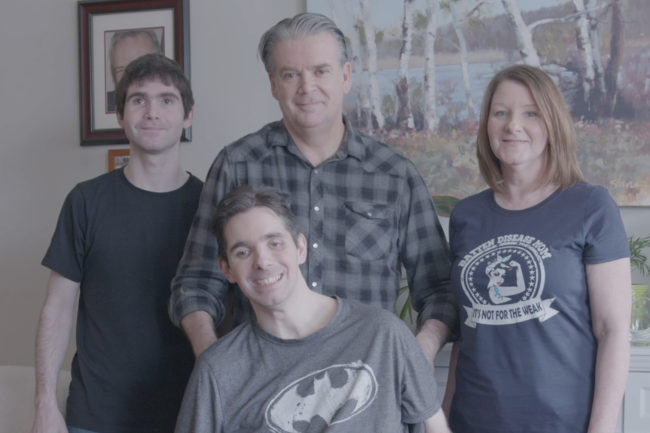Seeking Timely Access to Medical Innovation
“The speed at which scientific discoveries are taking place has increased exponentially, and the system was simply not built to adapt to these rapid medical advances” Andrew McFadyen, Executive Director, The Isaac Foundation
By D.F. McCourt
In Canada, our health care system is a point of national pride. The idea that all Canadians should have fair and equal access to the best health care possible is core to our civic identity. Unfortunately, for Canadians with rare diseases, the reality often fails to live up to the ideal.
Though each individual rare disease is—by definition—rare, collectively these conditions affect millions of Canadians. While many rare diseases still lack treatment options, innovation is progressing rapidly and an overwhelming number of families are in urgent need of access to treatments that can be life-changing and even life-saving.
In 2006, Andrew McFadyen’s son Isaac was diagnosed with mucopolysaccharidosis (MPS) VI, a rare and progressive genetic disease. The year prior, the U.S. Food and Drug Administration (FDA) approved an enzyme replacement therapy specifically for MPS VI. Despite the existence of this beneficial treatment, the McFadyens had a lengthy fight in order for Isaac to receive access to it in his home province of Ontario. Realizing that parents had little influence in the political arena where health care access decisions are made, Andrew founded The Isaac Foundation with the mission of helping families affected by rare diseases. “It’s very difficult to get anywhere as patients or parents in the political system,” says Andrew. “An organization has a much more powerful ability to advocate for patients’ needs. Parents and patients should have a voice at the table where the decisions are happening. I also feel that parents should have time to be parents, rather than needing to be full-time advocates.”
Though Isaac was eventually able to gain access to the MPS VI treatment, too many families are still living in limbo. In Halifax, Kim Mason is watching her two sons, Denver and Jaxom, slowly lose their health and independence to Batten disease, a progressive disorder of the nervous system. Until very recently, no treatment for Batten disease existed, but a treatment that was approved by the FDA in 2017 changed everything. “Of course we got excited, and our genetics doctor put in an application to pharmacare here in Nova Scotia to see if our boys would be candidates for treatment,” says Kim. “It was denied. I really don’t know what we’re supposed to do next. It’s a race against time with a disease like this. We’re afraid that by the time the treatment is approved, it may be too late.”
Many Stakeholders, One Goal

Martin Pollock photographed at his office in Winnipeg, MB
It’s only natural in situations like this to look for a villain. It would be easy to blame the government or the drug manufacturers for the plight of the Mason brothers. Through his work with The Isaac Foundation, however, Andrew has become convinced that everyone, really, is fighting on the same team. “No one on any side of the table wants to block access for patients with rare diseases,” he says. “They desperately want to ensure access. But the processes in place can make it very difficult for things to move quickly. The speed at which scientific discoveries are taking place has increased exponentially, and the system was simply not built to adapt to these rapid medical advances.”
These advances come in many forms. Winnipeg-based lawyer Martin Pollock has been living with Gaucher disease, a genetic disease that shares some similar conditions to MPS, for his entire life. Since 2000, he has been receiving bi-weekly intravenous enzyme replacement treatment and it has given him his life back. But now, after over 400 IV treatments, he’s reaching the physical limits of what his body can handle. “There’s only so much my veins can take,” he says. “I’ll take the needles as long as I can, but I’m at the point now where they can no longer use the veins in the back of my arms. I get coldness and numbness in my fingers and hands. It’s not going to be sustainable.”
A newly-developed drug that replaces the intravenous infusion with a twice daily pill now exists, after being approved by the FDA in 2014 and Health Canada in 2017. However, so far only the IV treatment has been approved for reimbursement in Manitoba. “I want to see anyone who has this disease be able to receive the pill early on in their treatment,” says Martin, “so they don’t have to go through what I have.”
Many Stakeholders, One Goal
Five-year-old Jordan McInerney of Barrie has been battling acute lymphocytic leukemia (ALL) since before her first birthday. While her disease is not rare itself, the course it’s taken has placed her in a very distinct patient population needing specialized treatment. First-line treatments, including chemotherapy and bone marrow transplants, failed to halt Jordan’s leukemia. Around this same time, a clinical trial for a new innovative gene therapy was taking place at the Children’s Hospital of Philadelphia. Having exhausted existing treatment options, Jordan’s best chance was participation in this trial. She was fortunately able to enroll and access this new treatment.

The McInerney family photographed in their neighbourhood in Barrie, ON.
Known as chimeric antigen receptor T cell (CAR-T) therapy, the treatment uses genetically engineered variants of Jordan’s own T cells to precisely target and eliminate her specific leukemia. And, for Jordan, it has been working. “Jordan’s life after CAR-T cell therapy has been so much more than we ever dared to hope for,” says Jordan’s father, Stephen. “She spends her time in a kindergarten class instead of a hospital room. She dances, plays with her brothers, and is all smiles and laughter. There was a time when that was only a dream for her. Now she’s living that dream.”
Despite the difficulties involved in travelling back and forth to the U.S., Jordan’s story is one of successful and timely access when it was needed most.
Currently, one CAR-T cell therapy has been approved by Health Canada for pediatric ALL and, once access negotiations are complete, it could open up a new option for children and adolescents whose disease has relapsed or failed to respond to conventional treatments.
With so many new therapies being developed every year, our health care system must adapt in order to ensure Canadians in need have access to these innovative treatments. We must strive for more stories like Jordan’s—stories where the barriers to treatment, if they exist, are manageable rather than insurmountable.
Collaboration is Key
Responding to this need, steps are being taken to develop a new model for access to rare disease treatments. “In 2014, Health Ministers recommended establishing a provincial/territorial Expensive Drugs for Rare Diseases Working Group (EDRD WG),” says Ontario’s Assistant Deputy Minister of Drugs and Devices Division, Suzanne McGurn, one of the driving forces behind the effort. “The working group was asked to explore how to manage access to, and the cost of, drugs for rare diseases with evidence-based approaches.”

The Mason family photographed at their home in Halifax, NS.
Last spring, years of work by the EDRD WG culminated in a new proposed supplemental process to streamline patient access to complex and specialized medications. “The primary objective of this supplemental process is to implement a proactive, consistent, fair, and transparent process,” says McGurn. “Stakeholder feedback is being used to refine the proposal.”
This level of collaboration in action signifies the potential for real change in an area of health care that has been stalled for far too long. It is proof that a new framework for patient access—one that lives up to the Canadian ideals of equal health care access for all—is achievable. We owe it to Isaac, Denver, Jaxom, Martin, Jordan, and the millions of Canadians living similar journeys to turn the potential for change into a reality.
There is no reason our health care system cannot evolve to deliver on its fundamental promises for all Canadians—no matter how common or rare their health issues may be.



